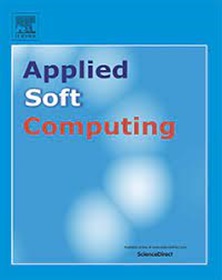VHTformer:基于Transformer的视觉-触觉-文本信息联合查询感知方法
IF 7.2
1区 计算机科学
Q1 COMPUTER SCIENCE, ARTIFICIAL INTELLIGENCE
引用次数: 0
摘要
多模态信息融合研究致力于协调异构模态和解决数据不平衡问题,特别是在整合视觉、触觉和文本时——这三种模态提供互补的感知和语义特征。目前的研究主要集中在变压器的单模态和视觉-触觉双模态任务,忽视了三模态集成。利用文本的语义桥接能力可以解决跨感官学习中的这一限制。我们提出了VHTformer,一个基于transformer的框架,旨在通过联合查询学习统一视觉、触觉和文本模式。该模型利用了分层注意机制:自注意精炼了模态内特征(例如,从触觉信号中提取纹理或从文本中提取上下文语义)。与此同时,交叉注意通过可学习的联合查询对不同模式的空间语义模式进行对齐。这使得几何形状(视觉)、材料属性(触觉)和描述属性(文本)的协同融合成为可能。实验在ObjectFolder 2.0、Touch and Go和ObjectFolder real三个多模态数据集上进行,涵盖了100个具有不同材料和形状属性的 + 对象类别。为了减轻类别不平衡并确保统计信度,我们采用分层5重交叉验证。此外,我们还进行了高斯噪声注入下的鲁棒性评估,以验证模型的鲁棒性。VHTformer的识别准确率高达99.55 %,具有较强的鲁棒性,突出了三模态集成对全面对象理解的价值。本文章由计算机程序翻译,如有差异,请以英文原文为准。
VHTformer: A joint query perception method for visual-haptic-textual information based on Transformer
Multimodal information fusion research struggles with aligning heterogeneous modalities and addressing data imbalance, especially when integrating visual, haptic, and text—three modalities offering complementary perceptual and semantic features. Current research focuses on Transformers for unimodal and vision-haptics bimodal tasks, neglecting tri-modal integration. Leveraging text's semantic bridging capacity could address this limitation in cross-sensory learning. We propose VHTformer, a Transformer-based framework designed to unify visual, haptic, and textual modalities via joint query learning. The model leverages hierarchical attention mechanisms: self-attention refines intra-modal features (e.g., extracting texture from haptic signals or contextual semantics from text). Meanwhile, cross-attention aligns spatial-semantic patterns across modalities through learnable joint queries. This enables synergistic fusion of geometric shapes (vision), material properties (haptics), and descriptive attributes (text). Experiments were conducted on three multimodal datasets—ObjectFolder 2.0, Touch and Go, and ObjectFolder Real—covering a total of 100 + object categories with diverse material and shape properties. To mitigate class imbalance and ensure statistical reliability, we adopted stratified 5-fold cross-validation. In addition, we conducted robustness evaluations under Gaussian noise injection to verify the model's robustness. VHTformer achieves up to 99.55 % recognition accuracy and demonstrates strong robustness, highlighting the value of tri-modal integration for comprehensive object understanding.
求助全文
通过发布文献求助,成功后即可免费获取论文全文。
去求助
来源期刊

Applied Soft Computing
工程技术-计算机:跨学科应用
CiteScore
15.80
自引率
6.90%
发文量
874
审稿时长
10.9 months
期刊介绍:
Applied Soft Computing is an international journal promoting an integrated view of soft computing to solve real life problems.The focus is to publish the highest quality research in application and convergence of the areas of Fuzzy Logic, Neural Networks, Evolutionary Computing, Rough Sets and other similar techniques to address real world complexities.
Applied Soft Computing is a rolling publication: articles are published as soon as the editor-in-chief has accepted them. Therefore, the web site will continuously be updated with new articles and the publication time will be short.
 求助内容:
求助内容: 应助结果提醒方式:
应助结果提醒方式:


